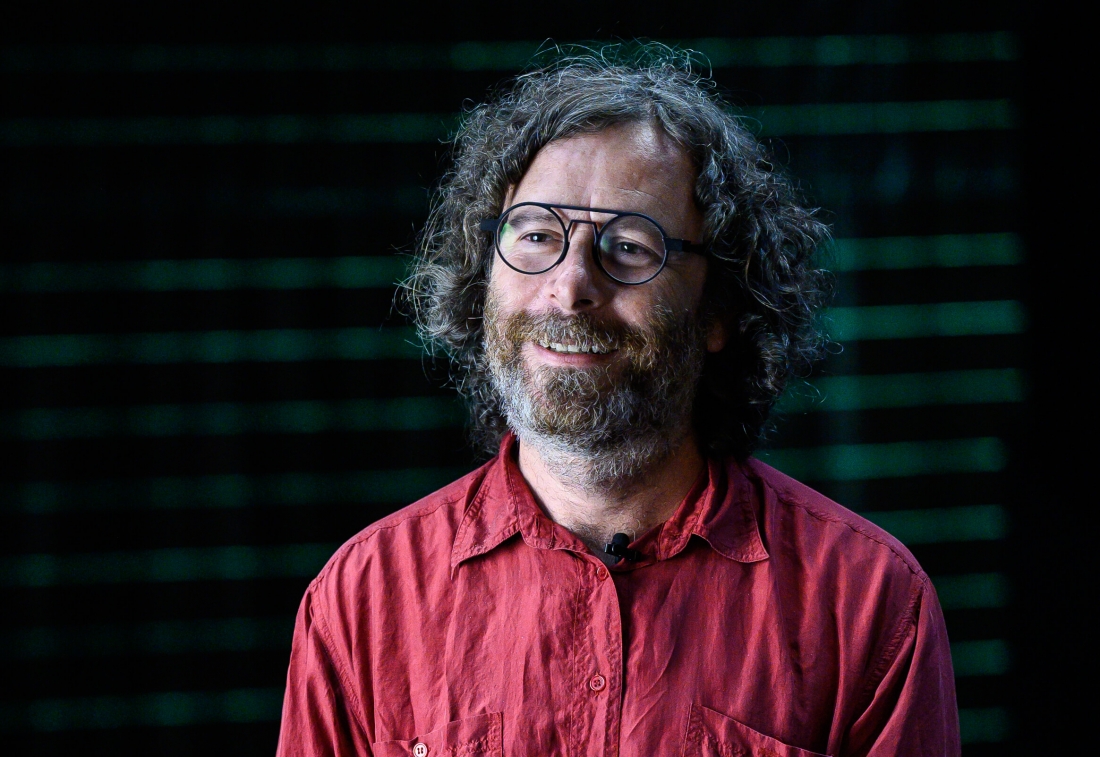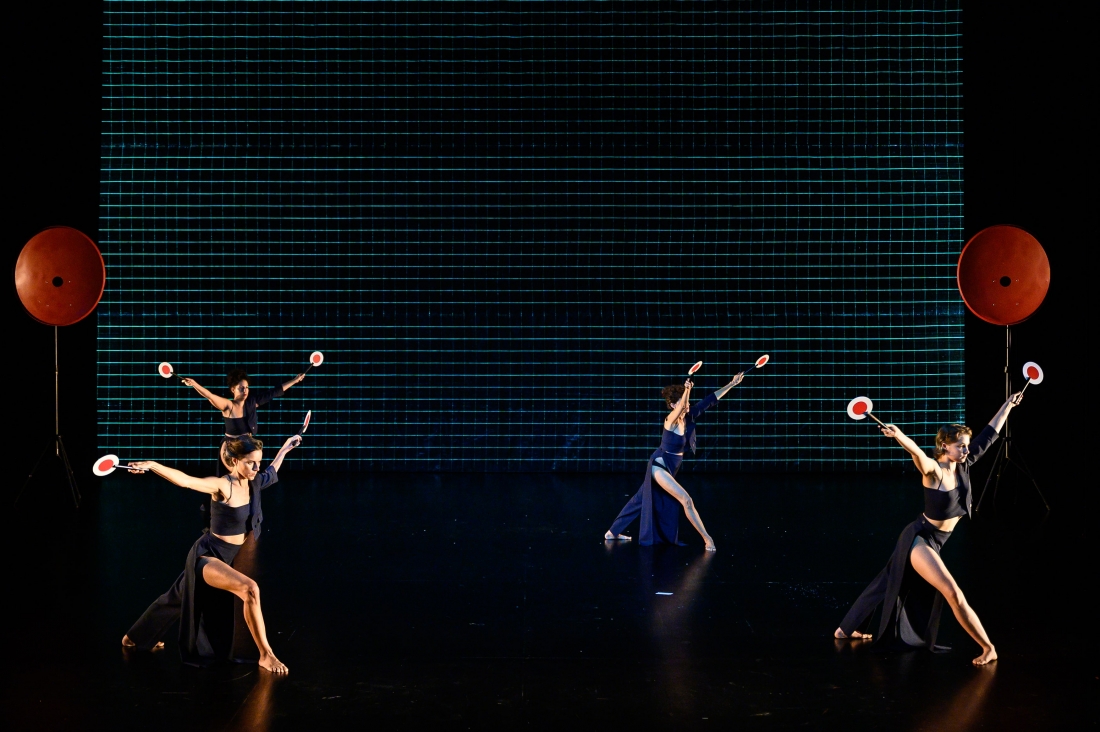Interview
António Lago
September
2022
Fri
23
On the 23rd and 24th of September, António Lago presents his new creation, Beetje bij beetje, in Campo Alegre. Days before the premiere, the director explained to us how he drew a parallel between the mechanized dynamics of an airport and the progressive state of catastrophe towards which the world is moving, little by little.
The show’s title is originally in Dutch, translated to English, it can suggest us that there is something happening “little by little”. Does it have a meaning? If so, to whom is it addressed?
Perhaps it is adressed to all of us. The meaning of the title is related to the fact that “little by little” we may be on the way to catastrophe or that “little by little” we will all fall into the abyss. In other words, if nothing is done, if we don’t become aware of everything that is happening around us – as climate change, war crises, the rise of the far-right, the exploitation of human beings by other human beings, the growth of bureaucracy (that strangles all of us) - “little by little”, if we are not careful, we can all end up in the wrong place.
Beetje bij beetje is a piece for five performers described as “a portrait of our societies”. How is this representation developed?
The play takes place inside an airport and on a plane. At first, I had no scenographic or conceptual ideas, but when I thought about the airport and the plane, as spaces, it seemed the perfect paradigm to me. It is in these spaces that the human being is more isolated, apart from his famiiar environment, comfort zone and nature. On a plane, we are completely confined in a machine. And at the airport, this whole process begins: we move away, exposing us and losing our identity. Basically, I consider it a non-space.
Is it, in this mechanized environment where individuality is erased, that these common problems are found?
Yes. These people ended up doing exactly the same tasks. It is in this space that we do not have any kind of identity that personality is completely erased. We all have to do what we are told to. There is a mechanization and a depersonalization here in choreographic terms. The notions of the military, the structural and the rigid are evident. Once again, notions that keep us apart from our identity and nature.
That's why the airport was the space where I was able to find all these crises. At the same time, we all have the desire to escape to somewhere, catch a plane and get out of here, go to a paradise island, because we are all very tired. Even so, airplanes are one of the most polluting things out there...
In Isabela Figueiredo's text, I found this duality, and from there, I started with this post-cabaret aesthetic basis: the rhythm of the show, and the fact that it often has sound environments. The entrances and exits on stage also have the whole show-off mechanics of a cabaret or a Portuguese revue theatre. I found in this space something that is required of us because as much as we are desperate and saturated, we all have to respond, fulfill something, feel good, be willing to survive with what we have.
This text fitted the show perfectly. It speaks of someone who is forced to move away from his hometown because of a war and who, in the end, finds himself in nature. Although it has absolutely nothing to do with Almodóvar's films, it sometimes reminds me of its endings.
What can we expect from the original music, scenography, and lighting of this piece? How do these elements “feed” the choreography?
These elements are extremely relevant because they have a similar language. It's all interconnected: the music, the light, and the choreography are in unison. They all work for the same purpose.
In terms of sound, there is something military and warlike, sounding like a fanfare, and at the same time, something that evokes techno. It is mechanical and exoteric. There is this duality between leisure and military. Sometimes they almost come together.
The show’s title is originally in Dutch, translated to English, it can suggest us that there is something happening “little by little”. Does it have a meaning? If so, to whom is it addressed?
Perhaps it is adressed to all of us. The meaning of the title is related to the fact that “little by little” we may be on the way to catastrophe or that “little by little” we will all fall into the abyss. In other words, if nothing is done, if we don’t become aware of everything that is happening around us – as climate change, war crises, the rise of the far-right, the exploitation of human beings by other human beings, the growth of bureaucracy (that strangles all of us) - “little by little”, if we are not careful, we can all end up in the wrong place.
Beetje bij beetje is a piece for five performers described as “a portrait of our societies”. How is this representation developed?
The play takes place inside an airport and on a plane. At first, I had no scenographic or conceptual ideas, but when I thought about the airport and the plane, as spaces, it seemed the perfect paradigm to me. It is in these spaces that the human being is more isolated, apart from his famiiar environment, comfort zone and nature. On a plane, we are completely confined in a machine. And at the airport, this whole process begins: we move away, exposing us and losing our identity. Basically, I consider it a non-space.
Is it, in this mechanized environment where individuality is erased, that these common problems are found?
Yes. These people ended up doing exactly the same tasks. It is in this space that we do not have any kind of identity that personality is completely erased. We all have to do what we are told to. There is a mechanization and a depersonalization here in choreographic terms. The notions of the military, the structural and the rigid are evident. Once again, notions that keep us apart from our identity and nature.
That's why the airport was the space where I was able to find all these crises. At the same time, we all have the desire to escape to somewhere, catch a plane and get out of here, go to a paradise island, because we are all very tired. Even so, airplanes are one of the most polluting things out there...
In Isabela Figueiredo's text, I found this duality, and from there, I started with this post-cabaret aesthetic basis: the rhythm of the show, and the fact that it often has sound environments. The entrances and exits on stage also have the whole show-off mechanics of a cabaret or a Portuguese revue theatre. I found in this space something that is required of us because as much as we are desperate and saturated, we all have to respond, fulfill something, feel good, be willing to survive with what we have.
This text fitted the show perfectly. It speaks of someone who is forced to move away from his hometown because of a war and who, in the end, finds himself in nature. Although it has absolutely nothing to do with Almodóvar's films, it sometimes reminds me of its endings.
What can we expect from the original music, scenography, and lighting of this piece? How do these elements “feed” the choreography?
These elements are extremely relevant because they have a similar language. It's all interconnected: the music, the light, and the choreography are in unison. They all work for the same purpose.
In terms of sound, there is something military and warlike, sounding like a fanfare, and at the same time, something that evokes techno. It is mechanical and exoteric. There is this duality between leisure and military. Sometimes they almost come together.




